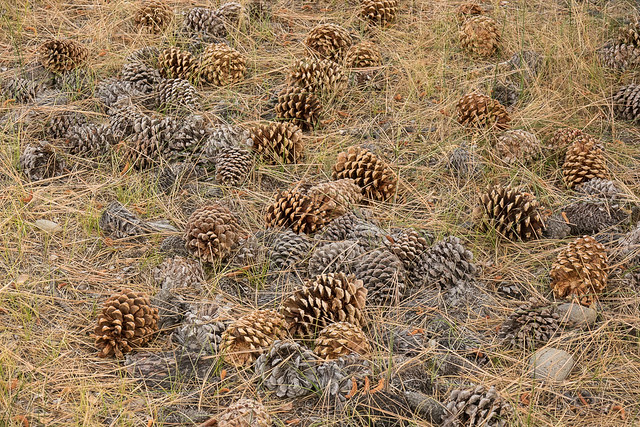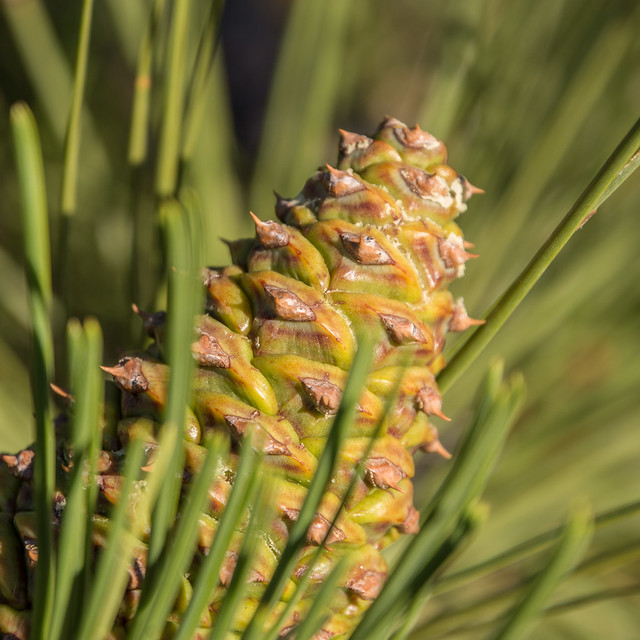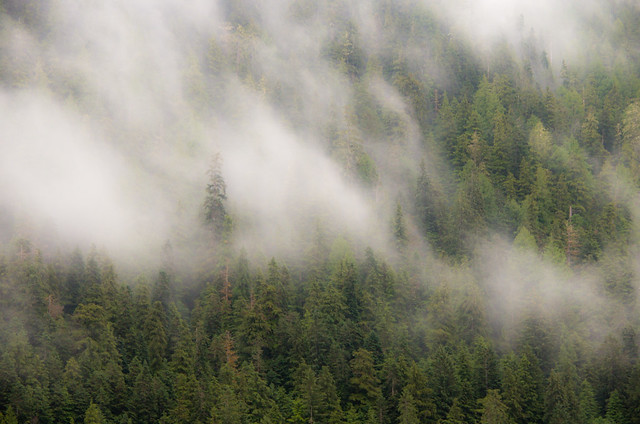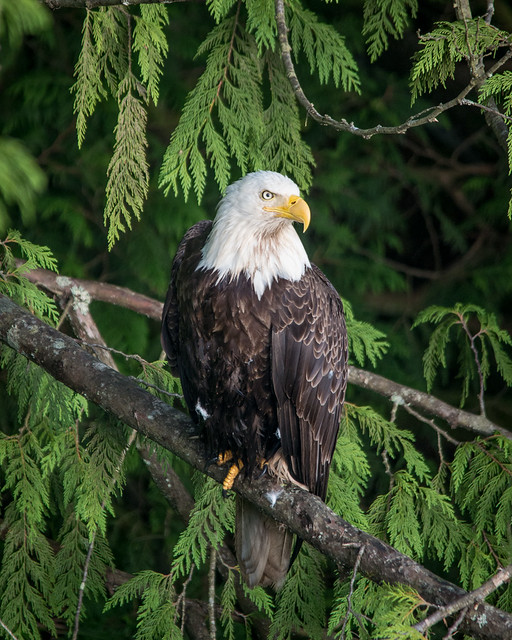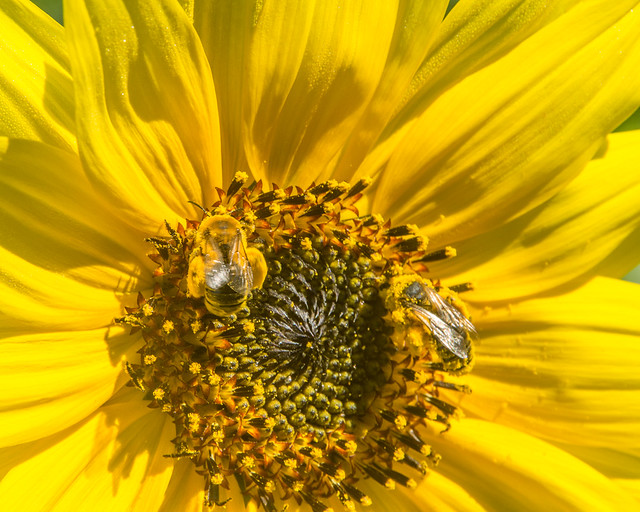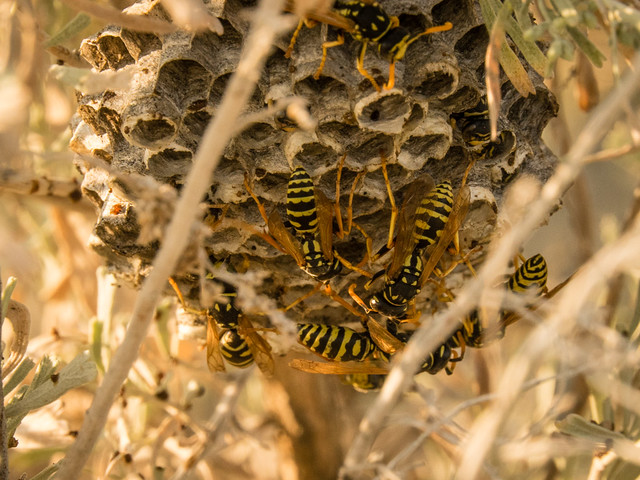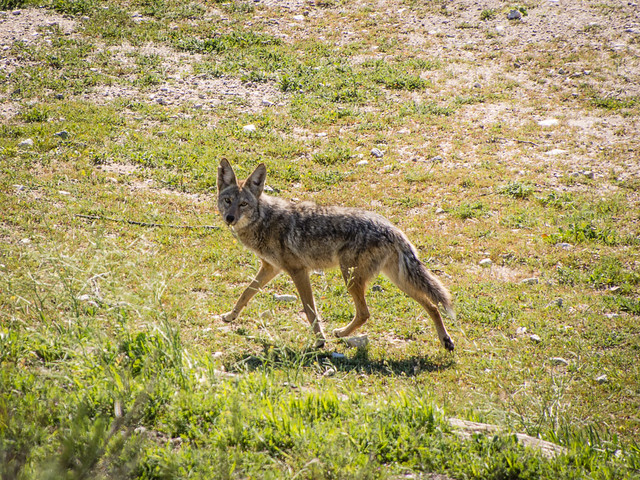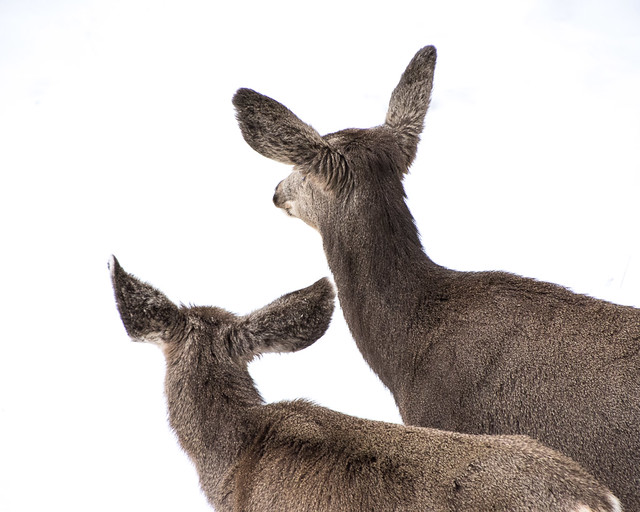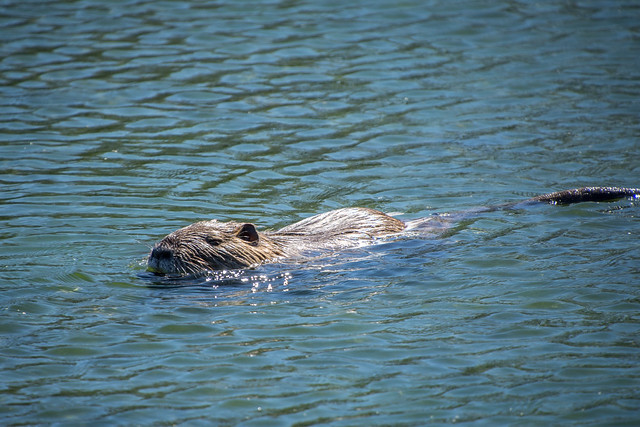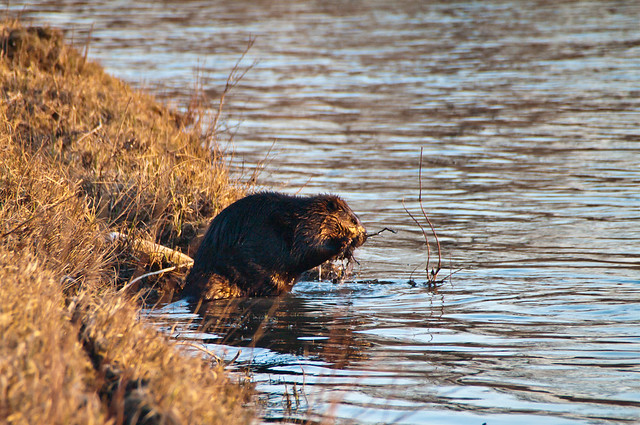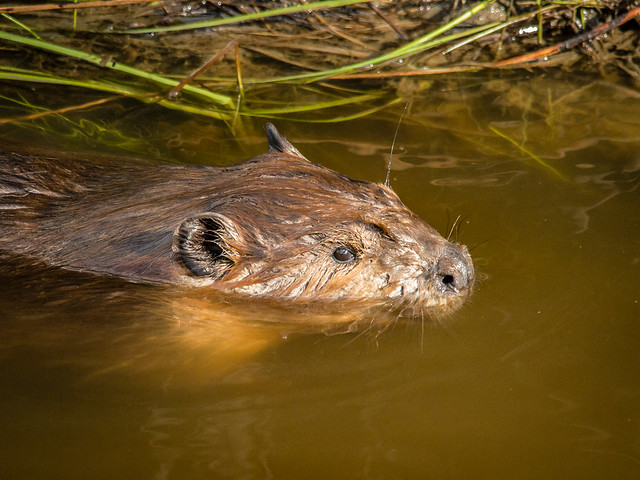Tuesday, 26 September 2017
EcoSask News, September 26, 2017
Upcoming Events
World Green Building Week, Sept. 25-Oct. 1
Buildings account for over a third of the world’s greenhouse gas emissions. Find out more on the World Green Building Week website.
Master Naturalist Field Trip, Sept. 27 (SK)
Register now for the SK Master Naturalist Field Trip on Sept. 27 to Last Mountain Lake National Wildlife Area. The day trip is the outdoor component of the Prairie Ecosystems module. A classroom component will be offered this winter.
Campus Master Plan Open House, Sept. 27 (Saskatoon)
The University of Saskatchewan is holding a public open house from 4-8 pm, Sept. 27, at Louis’ Loft to discuss the development of the university’s new Campus Master Plan.
Be A Weed Warrior, Sept. 28 (Findlater)
The Native Plant Society of Saskatchewan is looking for volunteers to search for invasive salt cedar near Findlater on Sept. 28.
Wildlife Rehab Volunteers, Sept. 30/Oct. 1 (Yorkton)
Wildlife Rehabilitation Society of Saskatchewan will be holding a new volunteer information and orientation session in Yorkton in conjunction with Pet Expo on Sept 30 or Oct 1. If you're interested, contact Sean at shonersquid20@yahoo.ca or stop by the WRSOS booth at Pet Expo.
Selling Green Housing, Oct. 4 (Saskatoon)
Nathan Jones, Bill Madder, and Marcus Prebble will discuss selling green housing in Saskatoon at the Oct. 4 meeting of the Saskatchewan Energy Management Task Force.
Crude Power: Oil, Money & Influence in SK, Oct. 4 (Regina)
The film Crude Power: Oil, Money & Influence in Saskatchewan, produced by University of Regina School of Journalism students, will have its premiere followed by a panel discussion at 7 pm, Oct. 4.
Climate Reality Canada (webinar series), Sept./Oct.
Climate Reality Canada is presenting a fall webinar series at no cost.
Sept. 28, 2 pm – Experiential Change: One Month of Living Differently
Oct. 3, 5 pm – Best Practices in Municipal Ecofiscal Policy
Oct. 12, 2 pm – Legal Powers & Responsibilities of Municipalities
Oct. 17, 5 pm – Well-being for All: Taking your Institution Carbon Neutral
Oct. 26, 2 pm – Tarifer la Pollution: Etablir des Précédents à travers la Gestion des Déchets et de l’Eau
Saskatoon Nature Society Field Trips
Golden Eagles
Oct. 5, 9 am – Whooping Cranes
Oct. 12, 9 am – Blackstrap, Indi Lakes Area
Retirees and partners who are interested in birds and the natural world are invited to participate in Golden Eagle field trips.
Other Saskatoon Nature Society Field Trips
Oct. 7, 8 am-5 pm – Whooping Crane Field Trip
Oct. 9, 9:30-11:30 am – Woodlawn Cemetery Bird Walk
Check the Saskatoon Nature Society’s website for full details and updated information.
A full list of upcoming events can be found on the EcoFriendly Sask Calendar
Rob Dumont Energy Management Awards
The Rob Dumont Energy Management Awards recognizing and honouring outstanding achievement in energy management will be presented on Oct. 4. There are so many outstanding individuals and organizations on the list of nominees! EcoFriendly Sask is honoured to be one of them.
In the News
The murder of the energy industry is key to it securing a bright future
10 key ingredients of a green, healthy community
The wildlife value of a messy garden
#BugsR4Girls: How 8-year-old Sophia Spencer co-authored a scientific paper on bugs
EcoSask News is a weekly round-up of local news and events. Email us if you have items you would like us to include.
You can follow EcoFriendly Sask by liking us on Facebook, following us on Twitter, or by email (top right corner).
Labels:
Birds,
Construction,
Energy,
Invasive Plants,
Master Naturalist,
Oil,
Regina,
Saskatchewan,
Saskatoon,
University,
Urban Planning,
Wildlife,
Yorkton
Friday, 22 September 2017
The Future of Renewable Energy in Indigenous and Remote Communities
The School of Environment and Sustainability, University of Saskatchewan, in conjunction with Saskatchewan Polytechnic, held a one-day public symposium on Renewable Energy in Remote and Indigenous Communities on September 5 in Saskatoon.
See Also: Renewable Energy Success Stories from Indigenous and Remote Communities in Alaska
A Circumpolar Perspective
The symposium’s second panel looked at technological advancements. It was composed of: Laura Sokka, Senior Scientist, VTT Technical Research Centre of Finland, University of Helsinki; Raman Mall, Senior Engineer, Supply Planning and Integration, SaskPower; and Michael Ross, Industrial Research Chair in Northern Energy Innovation, Yukon College. The information they provided has been supplemented by extracts from two online reports.
Energy Requirements in Remote Communities
Many remote communities are off the grid and rely on diesel fuel. Renewable energy can support energy security, reliability, and self-reliance, but it faces a number of different challenges.
Renewable energy is variable and can’t be controlled (when the sun rises or if the wind will blow).
“One of the things that we are really looking at in Alaska is this idea of thermal storage. When we have more wind power than there is demand at any one time, you can store that in the form of heat, using distributed heating units in people's homes, or as hot water, which is more common. In Alaska, we use about two-thirds as much energy for heating as we do for electric power.” (Expanding Renewable Energy into Remote Communities is a Team Effort)
There are no economies of scale, a high capital cost, and logistical hurdles, such as getting a crane into a fly-in community.
Technology has not been designed to address small community needs (e.g. smaller or tilt-up turbines that don’t need cranes).
It’s important to test and verify that the technology works before sending it off into extreme conditions (although it was also noted that necessity was the mother of invention).
“We have installed a lot of equipment that hasn't worked particularly well in the Arctic. It is not just the temperature. A lot of it has to do with the fact that the air is denser when it is cold. The colder it gets, the heavier the air is. A turbine might fail in the Arctic when it would be fine in a more temperate environment operating at the same wind speed, because the air is more dense.” (Expanding Renewable Energy into Remote Communities is a Team Effort)
Labour is hard to come by for both installation and maintenance. Plug and play options, such as solar shingles and film, are more modular and don’t require as much expertise to install and maintain.
“Stakeholders noted that communities currently lack adequate opportunities to collaborate on an equal footing with public utilities and private developers, in terms of deploying, operating and maintaining these systems. They felt that a lack of knowledge and technical proficiency within the communities was a significant barrier to developing these more holistic collaboration models, compounded by a lack of training opportunities available to acquire the skills and knowledge needed within the community.” (Enabling a Clean Energy Future for Canada’s Remote Communities)
Diesel may be loud, smelly, and expensive, but it’s controllable and transportable. Replacements must be reliable.
Michael Ross pointed out that that no one size fits all. The circumpolar region is a wide, diverse territory and it’s important to talk to the community, understand their way of life, values, and needs before suggesting a solution. The discussion needs to stretch beyond power to cold-climate housing and food security. In addition, successful projects in remote communities require a community champion.
“it was also felt that in accordance with the IESO’s Aboriginal Community Energy Planning (ACEP) process, the current evaluation of community projects may not be holistic enough and does not adequately examine the interface with other local infrastructure, such as water purification plants or institutional facilities, to obtain system performance and economic efficiencies.” (Enabling a Clean Energy Future for Canada’s Remote Communities)
Consideration must be given to the motivation for going to renewables as remote communities generate a very small proportion of CO2 emissions. Incentives may include cost, efficiency, environmental, and social goals.
“Challenging fuel logistics and delivery of diesel in Canada’s most isolated populations can have serious environmental implications. Lengthy distances significantly increase the risk of spills and leakages, and once delivered there is still a risk of inadequate storage, with leaks causing in-situ contamination of soil and groundwater.” (Enabling a Clean Energy Future for Canada’s Remote Communities)
Renewable energy may not be the only option. If you can’t control the source, you may be able to control usage. Quebec publishes ads announcing peak times and asking people to reduce or delay usage.
Laura Sokka (research articles) explained that Finland has focused on wood energy and combined heat and power production in conjunction with pulp and paper mills. However, she noted the competing demands on Finland’s forests for pulp and paper, energy, and traditional uses such as reindeer herding in northern areas.
Tuesday, 19 September 2017
EcoSask News, September 19, 2017
Upcoming Events
Ground Zero: A Delicate Balance, Sept. 21 (Saskatoon)
20 years after production, Thomega Entertainment is broadcasting its Sask-made documentary, Ground Zero: A Delicate Balance, followed by a discussion at 7 pm, Sept. 21, at Broadway Theatre.
Energy Dialogues, Sept. 23 (Regina)
Young adults (18-35) are invited to share what they want for the Canadian energy system by 2050 at Energy Dialogues, 1-3 pm, Sept. 23, in Regina.
Fall Photo Trip, Sept. 23 (Saskatoon)
Join the Saskatoon Camera Club on their Sept. 19 fall field trip to Gardiner Dam.
Breakthroughs in Water Security Research (Saskatoon & live stream video)
The Global Institute for Water Security and the School of Environment and Sustainability, U of S, are presenting a weekly seminar series featuring top water experts. Lectures are free and the public is welcome. All lectures will be available by live stream video. They are normally held on Wednesdays at 3:30 pm.
Sept. 27, 3:30 – The Soil is Not Enough
Adventures of a Wildlife Veterinarian, Sept. 24 (Saskatoon)
Jerry Haigh will present his book Porcupines to Polar Bears at 11 am, Sept. 24, at Saskatoon’s Word on the Street.
Greater Sage-Grouse Recovery Efforts in Montana, Sept. 27 (webinar)
Heather Nenninger, Sage Grouse Initiative, will speak about Greater Sage-Grouse Recovery Efforts in Montana at noon, Sept. 27, as part of SK PCAP’s Native Prairie Speaker Series.
Solar Eclipse Explanation, Sept. 27 (North Battleford)
Eclipse enthusiast Don MacKinnon will describe his recent trip to watch the August 2017 solar eclipse at 7 pm, Sept. 27, at the North Battleford Public Library.
Boreal Mushrooms, Sept. 27 & 29 (Prince Albert)
David Stevenson will give a presentation on boreal mushrooms at the John M. Cuelenaere Public Library at 7 pm, Sept. 27, to be followed up with a mushroom foray at Little Red Park at 10 am, Sept. 29.
Carbonless Concert X, Sept. 30 (Saskatoon)
Solar-powered Carbonless Concert X will be held from 6:30-9 pm, Sept. 30, at the Graduate Student Commons, U of S. Admission is free as the concert series celebrates its first-year anniversary.
The Lorax, Sept. 30 (Prince Albert)
Celebrate National Forest Week at a screening of The Lorax at 2:30 pm, Sept. 30, at the John M. Cuelenaere Public Library, Prince Albert.
An Evening with Jane Goodall, Sept. 30 (Saskatoon)
Dr. Jane Goodall will be speaking in Saskatoon at 7 pm, Sept. 30.
Nature Journaling Workshop, Oct. 1 (Saskatoon)
SaskOutdoors is offering a nature journaling workshop from 1-4 pm, Oct. 1, in Saskatoon.
Rob Dumont Energy Management Awards Dinner, Oct. 4 (Saskatoon)
Attend the Rob Dumont Energy Management Awards Dinner on Oct. 4 in Saskatoon honouring the lifetime achievement award winner Harold Orr.
A full list of upcoming events can be found on the EcoFriendly Sask Calendar
Wanted: Wildlife Rehab Volunteers
The Wildlife Rehabilitation Society of Saskatchewan is eager for more volunteers in southern Saskatchewan. If you are interested in answering the phone or transporting injured animals, email either jamilleheer@hotmail.com or miss.pippin@hotmail.com. They’ll send you details about an upcoming volunteer orientation in Regina.
In the News
Take your weird bug questions to Saskatoon zoologist's Prairie Whatsits
Electric light has fundamentally altered our lives, our bodies, and the very nature of our sleep [video]
"Discontentment is the motivation for our restless desire to spend. Consumer products must promise paradise. But they must systematically deliver much, much less. . . . The success of consumer society lies not in meeting our needs but in its spectacular ability to repeatedly disappoint us."
Meet Canada’s bats in the Toronto Zoo’s publication, Bats: A Conservation Guide
During Hurricane Irma’s power outages, some houses kept the lights on with solar and batteries
EcoSask News is a weekly round-up of local news and events. Email us if you have items you would like us to include.
You can follow EcoFriendly Sask by liking us on Facebook, following us on Twitter, or by email (top right corner).
 |
| An EcoFriendly Action Grant to Fruit for Thought Regina helps to ensure that unwanted fruit is picked, shared and preserved, and waste is composted |
Labels:
Astronomy,
Awards,
Bats,
Books,
Children,
Consumerism,
Energy,
Films,
Grasslands,
Insects,
Lighting,
Mushrooms,
Nature,
North Battleford,
Photography,
Prince Albert,
Renewable,
Saskatoon,
Water,
Wildlife
Tuesday, 12 September 2017
EcoSask News, September 12, 2017
Upcoming Events
Kids Clubs @ Royal Sask Museum (Regina)
From biology mixed with art to artifact and gallery exploration – registration is now open for the kids club fall programs at Regina’s Royal Saskatchewan Museum.
Chubby Round Birds, Sept. 14 (Saskatoon)
Songbirds get a lot of attention, but Lyndon Penner will share his enthusiasm for short, chubby birds such as grouse at Wild Birds Unlimited at 7 pm, Sept. 14.
Buffalo Pound/Nicole Flats Photo Trip, Sept. 16 (Regina)
Join the Regina Photo Club on a field trip to Buffalo Pound/Nicole Flats on Sept. 16.
Royal Astronomical Society General Meeting, Sept. 18 (Saskatoon)
The Royal Astronomical Society, Saskatoon Centre, is holding a general meeting from 8-9:30 pm, Sept. 18.
The Spread of Purple Loosestrife, Sept. 18 (Regina)
Teresa Bomersbach, Sask Polytech, will discuss the spread of purple loosestrife at the 7:30 pm, Sept. 18 meeting of Nature Regina.
Sustainability in Saskatoon & Edmonton, Sept. 19 (Saskatoon)
Cody Sharpe will discuss The Stories Behind the Policy: Sustainability in Saskatoon & Edmonton at 7 pm, Sept. 19, as part of the SES/Public Library Sustainable Speaker Series.
H2oil, Sept. 20 (Regina)
Cinema Politica is screening H2oil about the Canadian tar sands at 7 pm, Sept. 20.
Riskier Climate Times in the Prairie Provinces, Sept. 21 (Saskatoon)
Elaine Wheaton, University of Saskatchewan, will discuss riskier climate times in the prairie provinces at the 7:30 pm, Sept. 21 meeting of the Saskatoon Nature Society.
Looking Ahead
Introduction to Passive House High Performance Buildings, Sept. 30 (Saskatoon)
Introduction to Passive House High Performance Buildings, providing an overview of the core principles of Passive House design and building energy efficiency regulations in Canada, is being offered in Saskatoon on Sept. 30.
Nature Retreat, Oct. 13-15 (Ness Creek)
SaskOutdoors is hosting a nature retreat Oct. 13-15 at the Ness Creek site near Big River.
Flowing Waters Conference, Oct. 17-19 (AB)
Partners FOR the Saskatchewan River Basin and the North Saskatchewan Watershed Alliance are hosting their annual conference in Leduc, AB, Oct. 17-19. The theme is Flowing Waters: Water Quality and Transboundary Issues in the Saskatchewan River Basin.
Nature Regina Field Trips
Sept. 23, 9 am-noon – Condie Nature Refuge
Check Nature Regina’s website for full details and updated information.
Saskatoon Nature Society Field Trips
Golden Eagles
Sept. 21, 8 am – Fall Migration South of Delisle
Retirees and partners who are interested in birds and the natural world are invited to participate in Golden Eagle field trips.
A full list of upcoming events can be found on the EcoFriendly Sask Calendar
In the News
Due to budget cuts to the Meewasin Valley Authority, Beaver Creek Conservation Area, Saskatoon, will be closed on weekends and holidays from October 2017 through to March 2018.
In its first year, the Saskatchewan Environmental Society's solar energy project on the roof of the Two Twenty supplied nearly a third of the building's energy and saved 20 tonnes of greenhouse gases.
Edmonton's mayor wants a section of the city's river valley to become a provincial park similar to Fish Creek Provincial Park in Calgary.
These cities are swooping in to save bats with bat fests and citizen bat enthusiasts.
Solar power and honey bees make a sweet combo in Minnesota.
From greening the operating room to energy and waste reduction - a climate action playbook for hospitals.
EcoSask News is a weekly round-up of local news and events. Email us if you have items you would like us to include.
You can follow EcoFriendly Sask by liking us on Facebook, following us on Twitter, or by email (top right corner).
Labels:
Bats,
Beaver Creek,
Bees,
Birds,
Children,
Films,
Hospital,
Invasive Plants,
Meewasin,
Nature,
Regina,
Renewable Energy,
Rivers,
Saskatchewan,
Saskatoon
Sunday, 10 September 2017
Traffic Calming Measures to Protect Wildlife in the Swale
The Meewasin Northeast Swale (and neighbouring Small Swale) is home to a herd of white-tailed deer, a sharp-tailed grouse breeding ground, endangered species such as the northern leopard frog, and more than 300 other bird and wildlife species. Life isn’t easy for these wild animals. Used to ranging freely from grassland to river, they are now confronted by housing developments and roads.
Roads cross the Swale in five different locations, representing a significant risk for both wildlife and humans. The Canadian Wildlife Roadsharing Resource Centre notes that “Wildlife-vehicle collisions (WVCs) pose a serious risk to people and various animal species across Canada. They can result in severe injury or death for drivers and other road users, along with associated significant costs, up to $200 million annually. . . . The impact on wildlife is just as problematic. Increased land use and human development have further encroached into wildlife habitat areas, diminishing food and water sources for animals, and creating barrier effects between habitats. Equally important, road mortality is a leading factor for over 30 species designated as threatened or at risk by the Government of Canada.”
In a recent presentation to the City of Saskatoon’s Standing Committee on Transportation, the Northeast Swale Watchers said, “While it is a challenge to protect environmental resources within an urban context, much can be done to mitigate the negative effect of human encroachment, particularly if we are to reconsider traditional design approaches. . . . the real solution should involve good design that encourages the driver to reduce speed and watch for crossing wildlife.”
Influence Driver Behaviour
Road Closures
The City of Saskatoon plans to develop Lowe Road to access the proposed neighbourhood north of the Swale. However, Lowe Road crosses the ecological core of the Northeast Swale and further development would severely compromise the integrity and continuity of the Swale. The Swale Watchers recommend that Lowe Road be closed or barricaded for use only by emergency vehicles (fire, police, and ambulance).
The Swale Watchers go on to suggest that “the neighbourhoods north of the Swale could be redesigned to take advantage of access via Central Avenue and the North Commuter Route to alleviate traffic loading on Fedoruk Drive which could then properly serve the neighbourhoods south of Fedoruk Drive, particularly since the Regional Plan is proposing further residential development north of the North Commuter Route.”
Update: The future of Lowe Road has been referred to the Swale stakeholder group and the City of Saskatoon’s administration to report back to the City's Standing Committee on Transportation.
Reduce Vehicle Speed
The Northeast Swale Watchers recommend a 50 km/h speed limit on all roads crossing the Swale and the Small Swale to improve driver response time and reduce the severity of crashes. Compliance, however, can be a problem and police enforcement is expensive. As a result, the Swale Watchers recommend a variety of traffic calming measures.
Swale crossings should be narrowed by eliminating the central median and shoulders, bold zebra stripes installed along the entire length of the crossings, and rumble bumps or strips installed in advance of the actual Swale crossings. “As a temporary experimental project, the City could use rubber speed cushions or platforms which are commercially available.”
In addition, the Northeast Swale Watchers recommend that all swale crossings have signs advising commuters that they are crossing a wildlife habitat area. As simple deer crossing signs are easily ignored, the Swale Watchers suggest “an overhead large sign which reads ‘Entering the NE Swale Environmental Preserve – animals are present. Monitored Speed Limit 50 km/h maximum. Fines Triple.’” Driver feedback signs at both ends of each Swale crossing would remind commuters of their actual speed.
Update: The City of Saskatoon’s Standing Committee on Transportation is meeting on Monday, September 11, to discuss speed limits throughout the Northeast Swale.
Street Lighting
The Northeast Swale Watchers recommend lower levels of lighting (3000K temperature light source) in all swale crossing zones to remind drivers that they are passing through an area with a large wildlife population, reduce dazzle for deer and other animals, and help protect natural darkness in the Swale.
Fedoruk Drive abuts the Northeast Swale for almost its entire length. The Northeast Swale Watchers recommend that all the street lighting along this route should employ a 3000K temperature light source and be located on the north side of the Drive and shining toward the opposite side of the street with no backlighting into the Swale.
Physically Separate Animals from the Roadway
Fencing
Fencing can be effective, but it must be properly installed and maintained and consideration must be given to the species involved. For example, mesh may need to be installed at the bottom to prevent small animals such as turtles, rabbits, or snakes from passing through and there should be opportunities for animals trapped on the wrong side of the fence to escape.
Underpasses and Overpasses
When combined with fencing, wildlife underpasses and overpasses are one of the most effective ways to reduce wildlife-vehicle collisions. An underpass for very small animals has been installed on Central Avenue in the Peturrson’s Ravine area, but there are as yet no plans for additional crossings for wildlife of any size on roads crossing the Northeast Swale or the Small Swale.
Additional Resources
The Northeast Swale: Seeking Solutions
5 Ways to Calm Traffic on a Busy Road
Traffic Calming Guide for Toronto
Wildlife Roadsharing Resource Centre
Wildlife-Vehicle Collision Reduction Study: Report To Congress
Thursday, 7 September 2017
Renewable Energy Success Stories from Indigenous and Remote Communities in Alaska
 |
| Fire Island wind turbine |
The School of Environment and Sustainability, University of Saskatchewan, in conjunction with Saskatchewan Polytechnic held a one-day public symposium on Renewable Energy in Remote and Indigenous Communities on September 5 in Saskatoon.
The symposium was the first step towards creating “the world’s first global consortium focused on addressing the challenges and possibilities associated with renewable energy in remote and Indigenous communities. . . . Investment in the renewable energy sector provides an enormous opportunity to address local energy needs and increase quality of life, while meeting regional, national and international emissions targets. Our work will not only produce critical research and innovation in the field of renewable energy, but help Indigenous and remote communities enjoy the benefits of stable power sources.”
See also: The Future of Renewable Energy in Indigenous and Remote Communities
 |
| AVEC wind tower crew travel arrangements |
The Alaska Experience
The symposium’s first panel was composed of three people from Alaska: Gwen Holdmann, Director, Alaska Center for Energy and Power; Meera Kohler, CEO, Alaska Village Electric Cooperative; and Ethan Schutt, Senior Vice-President Land and Energy Development, Cook Inlet Region Incorporated.
Gwen Holdmann explained that Alaska is twice the size of Texas with a dispersed population, fragmented grid, a limited road network, a harsh and changing climate, stranded resources, and at the end of supply lines. 200 to 250 communities are not connected to the grid, and there are over 92 utilities (village and regional, profit and not-for-profit).
Alaska has made a stronger per capita investment in renewable energy than other states with a strong focus on wind energy. Initiatives have been community-driven: “That’s how we operate in Alaska” Holdmann says. Alaska's Renewable Energy Fund has played a key role in financing project start-ups.
 |
| AVEC tug and barge sets |
Alaska Village Electric Cooperative
The Alaska Village Electric Cooperative (AVEC) was established in 1967 and now incorporates 11,000 meters, 50 geographically dispersed communities, 50 power plants, 8.5 million gallons of diesel, 34 wind turbines, and 2 solar PV arrays. They operate two tug and barge sets to deliver diesel fuel to communities; fuel is flown in to 3 other communities. They are currently setting up additional wind turbines and hope to produce 2900 KW of wind energy in 2018. Their goal is to reduce diesel by 35% in the next 3 years.
Meera Kohler explained that AVEC’s key challenges are small power plants with low generation efficiencies, a lack of technical resources and manpower, the high cost of fuel, lack of capital for renewals and overhauls, and alternative technology that is too expensive to operate and maintain.
AVEC “officials see hybrid microgrids, harnessing renewable energy and emerging technologies as keys to cost stability and savings to its members.”
 |
| Fire Island Wind |
Fire Island Wind
Cook Inlet Region Inc. (CIRI) is one of 12 land-based Alaska Native regional corporations created by the Alaska Native Claims Settlement Act of 1971. CIRI’s mission is to promote the economic and social well-being, native heritage, and self-sufficiency of its 8,800 Native shareholders.
It operates a number of different energy projects. One of these is Fire Island Wind. 11 turbines on an island 3 miles off the coast of Anchorage supply energy to Alaska’s largest city. The project began delivering energy in 2012 and has the capacity to deliver energy to 7,000 homes.
Ethan Schutt says that Fire Island Wind faces some unique challenges. The only access is by plane or barge, and they have an insurance policy to cover lost production as winter repairs would be difficult. Laying the underwater transmission line was a complex process. Plans for a second phase have so far been unsuccessful. On the positive side, most of the energy is produced in winter when heavier loads of energy are required.
 |
| Fire Island Wind |
Cordova Electric Cooperative
Representatives of Cordova Electric Cooperative also participated in the symposium. Cordova Electric Cooperative is the sole provider of electricity to an isolated coastal community. The Cooperative is member owned and operates a diesel plant and two hydroelectric plants. It has an underground electrical system to ensure reliability during wind, snow, and ice storms and has a strong focus on conservation and energy efficiency to reduce the community’s use of diesel fuel.
Local Initiatives
Saskatchewan Environmental Society Solar Co-operative
First Nations Power Authority
Tuesday, 5 September 2017
EcoSask News, September 5, 2017
Upcoming Events
Library of Things, Sept. 6 (Saskatoon)
The Library of Things is meeting at 7 pm, Sept. 6, at The Better Good. Come volunteer or find out more about this project.
The Pastures, the Commons & the Grasslands, Sept. 11 (Saskatoon)
Join author and activist Trevor Herriot, photographer Branimir Gjetvaj, and researcher Michael Gertler to learn more about Saskatchewan's native grasslands at 7 pm, Sept. 11, in Saskatoon.
Save Seeds, Sept. 13 (Saskatoon)
The Saskatoon Food Bank and Learning Centre is hosting a workshop on saving seeds with the Saskatoon Seed Library from 7-9 pm, Sept. 13, at the Garden Patch. They’ll also be screening the movie Seed: The Untold Story.
Prairie Winds & Silver Sage Celebration, Sept. 16 (Val Marie)
Join Prairie Winds & Silver Sage in celebrating their 20th anniversary at 3 pm, Sept. 16, in Val Marie.
Northeast Swale Bioblitz, Sept. 16 (Saskatoon)
Join amateur naturalists and Meewasin conservation staff for a Bioblitz at the Northeast Swale on Sept. 16, 11 am to 5 pm.
Fall Photography Nature Walk, Sept. 16 (Saskatoon)
Join SaskOutdoors for a fall photography nature walk at Beaver Creek Conservation Area from 1-2:30 pm, Sept. 16.
Household Hazardous Waste Day, Sept. 16 (Saskatoon)
You can dispose of household hazardous waste in Saskatoon from 9 am – 3:30 pm on Sept. 16.
Walk21 Calgary, Sept. 19-22 (Calgary)
Walk21 Calgary, Sept. 19-22, will explore Calgary’s emerging walkability, discuss how walking transforms rapidly growing cities, and share ideas about how walking can connect people and communities.
NCC Conservation Volunteer Program (SK)
The Nature Conservancy of Canada’s Conservation Volunteers program provides great opportunities to get outside and do your part to protect or repair damage to the environment. There are 2 volunteer opportunities in September.
Sept. 21, 9 am-3 pm – Conservation Without Borders (Fairy Hill)
Sept. 30, 9 am-3 pm – Make Shoe Lake Great Again
Nature Regina Field Trips
Sept. 16, 9-11 am – Lakeridge Park Field Trip
Sept. 30, 8:30 am-6 pm – Last Mountain Lake National Wildlife Area & Bird Observatory
Check Nature Regina’s website for full details and updated information.
Saskatoon Nature Society Field Trips
Golden Eagles
Sept. 14, 8 am – Pike Lake Area
Retirees and partners who are interested in birds and the natural world are invited to participate in Golden Eagle field trips.
Other Saskatoon Nature Society Field Trips
Sept. 17, 1:30-6 pm – Fall Picnic at Blackstrap
Check the Saskatoon Nature Society’s website for full details and updated information.
A full list of upcoming events can be found on the EcoFriendly Sask Calendar
Co-existing with Beavers
The Fur-Bearers will be spending 5 days in Alberta in September working with non-profits and municipalities in the Edmonton area on beaver co-existence strategies. Wouldn’t it be great to invite them to Saskatchewan?
In the News
Artificial light at night reduces visits of nocturnal pollinators to flowers by 62%
The importance of a low-carbon building sector: "Canada has an important opportunity to transform the built environment and transition to a low-carbon future, while enhancing the performance and liveability of Canadian homes and businesses."
"We are not well prepared" - Federal government sets up expert panel to consider climate change adaptation
From awe-inspiring action shots to charming portraits - Bird Photographer of the Year 2017
Whether you’re lugging tires, bowling balls, or old Clif bar wrappers, these epic cleanups should provide inspiration
EcoSask News is a weekly round-up of local news and events. Email us if you have items you would like us to include.
You can follow EcoFriendly Sask by liking us on Facebook, following us on Twitter, or by email (top right corner).
Labels:
Birds,
Books,
Climate Change,
Conferences,
Construction,
Films,
Grasslands,
Lighting,
Photography,
Recycling,
Regina,
Saskatchewan,
Saskatoon,
Sharing Economy,
Swale,
Volunteers,
Walking,
Waste,
Wildlife
Subscribe to:
Posts (Atom)
